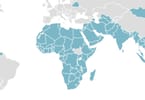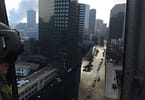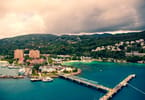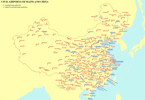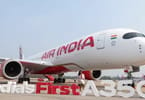It will request a good sense of imagination. Driving to Clark Airport, 70 km North of Manila seems to go back to the past. Leaving behind Metro Manila with its permanent crowded roads’ system, cars engage into a new highway linking the Filipino capital to the Clark-Subic Area surrounded by paddy fields and small farms. Depending of the exit taken to Clark airport, the car might even end up in a rural path. Clark Airport was previously a US Air force base. And entering the tiny passengers terminal, is hard to believe that one day give way some 80 million passengers would pass through the airport.
But for now, Clark Diosdado Macapagal International Airport (DMIA) receives only 600,000 passengers and it is considered by the Philippines Air Transport Office as the principal gateway for budget airlines. “Perspectives have been so far very good in 2009 with double-digit growth in passengers’ traffic between January and September. We are likely to hit a million passengers between 2011 and 2012”, says Victor Jose Luciano, President and CEO of Clark International Airport Corporation.
A major push occurred in 2008 when Filipino President Gloria Macapagal Arroyo signed the decree to transform the airport into Manila’s Premier Air Gateway. The airport’s surface is almost three times bigger than the current Manila Ninoy Aquino International Airport – 2,387 ha in total of which only 800 ha are currently in use. The US Air Force left the facility equipped with two runways of 3,200 m both able to cater with large aircraft such as the Airbus.
So far, DMIA is linked by six low cost carriers (Cebu Pacific, AirAsia, Tiger Airways, Spirit of Manila, SEAir and Zest Air) and legacy carrier Asiana from Korea. Jin Air has already announced to soon begin flights from Seoul to Clark. According to Luciano, a Gulf carrier could also soon be present at the airport, caring then for the million Filipino workers living in the Middle East. “We are also confident to welcome AirAsia newest base in Southeast Asia. We had already serious discussions with its management”, adds Luciano. The new kid on the block is Spirit of Manila which started in November routes to Macau, Taipei and Bahrain.
The biggest issue is now the development of the new terminal. The construction so far delayed but it seems that work will start on the first part of the terminal this year. A new gallery and a second floor are being added to the current terminal which will raise capacity from two to five million passengers. Clark’s ambitions are soon to take a more concrete shape. Plans have been already approved to design a second terminal which will constitute the base of the country’s future intercontinental gateway. A master plan was developed by Korea international Cooperation Agency (KOICA) in November 2008 looking for a second terminal with an initial capacity for seven million passengers. Other infrastructure includes a shopping center, new taxiways, the expansion of the apron and one runway, a freight terminal and a new control tower. Total investment for this phase is estimated at US$ 150 million dollars with completion expected in 2013. “By then, Terminal 2 will be dedicated to international traffic with Terminal 1 taking over all domestic routes”, says Luciano. In the long term, DMIA will be able to handle 80 million passengers.
Local newspapers recently reported the interest of a Kuwait-based firm, Almal Investment Company, to develop DMIA for a total investment of US$ 1.2 billion. In a proposal dated December 24, 2009, the company expressed its desire to develop all civil components of DMIA Terminal 1, 2, and 3 based on the existing master plan. Almal Investment Company would immediately spend US$ 100 million for the first phase of Terminal 2.
Another urgent issue will be the link to Manila. So far, it takes over two hours by car to reach the airport and urgent work must be done to enlarge the highway and offer a proper public transportation. “We are very conscious of the saturation of the road system in Manila but it should get better with the opening in 2010 of a new ring road in Quezon City. The completion of the Northern Commuter Train System will also provide a direct rail link from Clark to Manila Northern Station,” adds Luciano.
The development of DMIA as the country’s Premier gateway will not mean the closure of the current Manila International Airport. NAIA will be downgraded to a domestic airport with all the flights concentrated in Terminal 2 and Terminal 3. and for the start of 2010, some positive development are likely to take place at NAIA. It seems that Manila Airport’s most modern facility, Terminal 3, will finally become the new home for four international carriers –most probably Korean Air, Japan Airlines, Thai Airways and Singapore Airlines. So far, only Cebu Pacific and PAL Express operate from the Terminal built to accommodate 13 million passengers. In the long term, Terminal 3 will take over all international carriers with Terminal 1 closing its doors to the public. Until now, foreign carriers had preferred to stay at the old Terminal 1 because of Terminal 3’s legal issues between the government and the consortium which built the facility.
WHAT TO TAKE AWAY FROM THIS ARTICLE:
- “We are very conscious of the saturation of the road system in Manila but it should get better with the opening in 2010 of a new ring road in Quezon City.
- In a proposal dated December 24, 2009, the company expressed its desire to develop all civil components of DMIA Terminal 1, 2, and 3 based on the existing master plan.
- So far, it takes over two hours by car to reach the airport and urgent work must be done to enlarge the highway and offer a proper public transportation.



